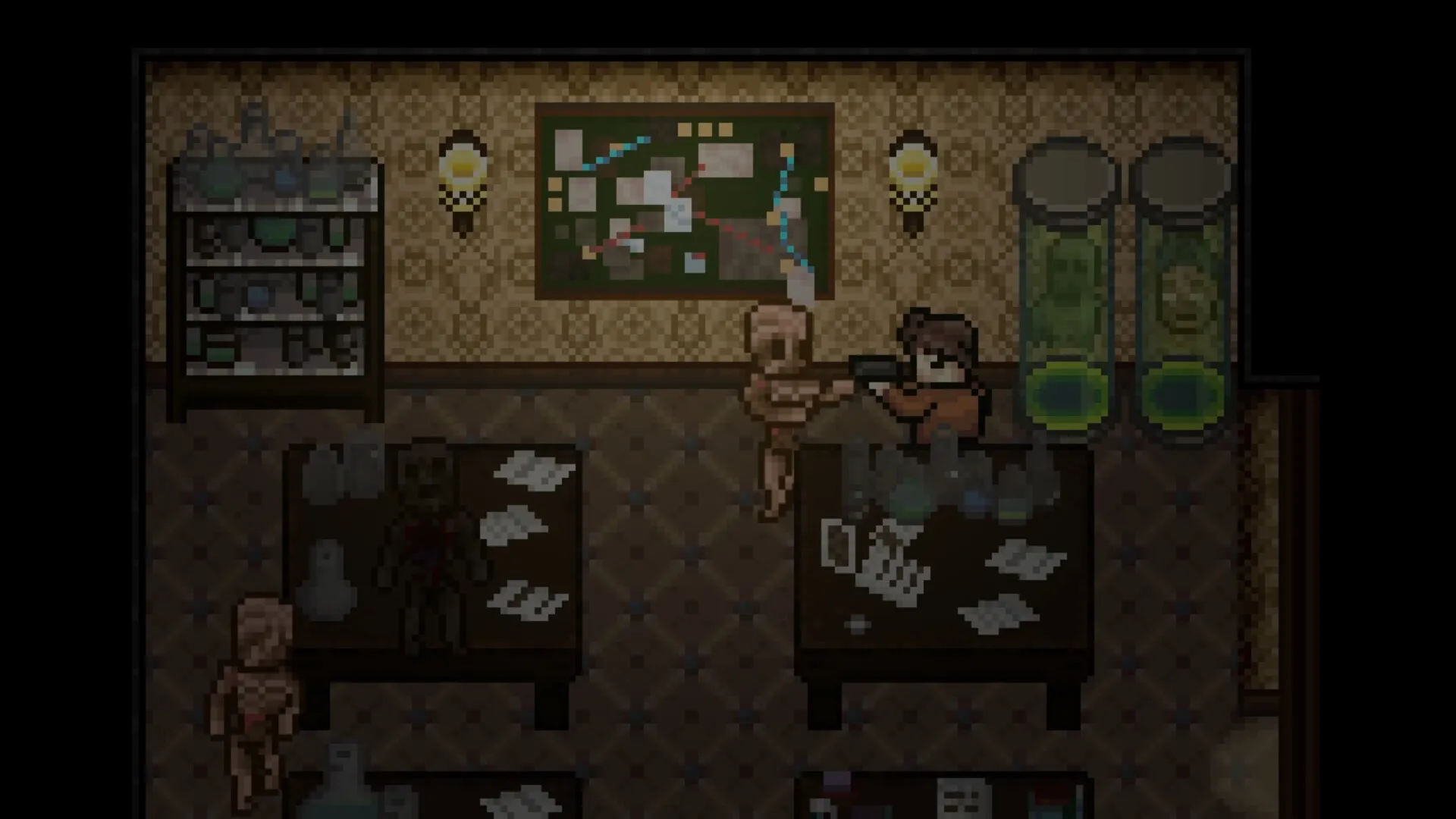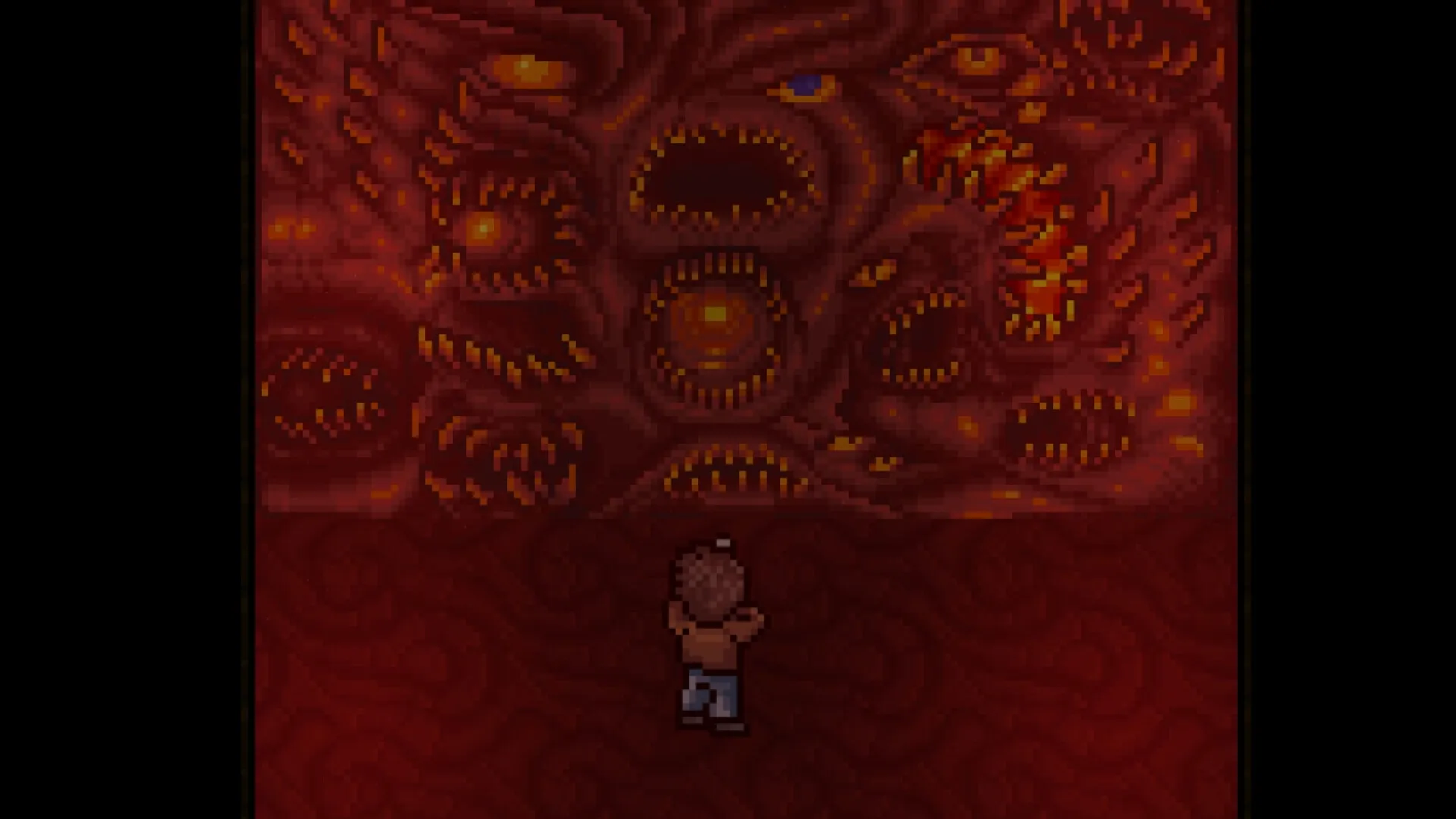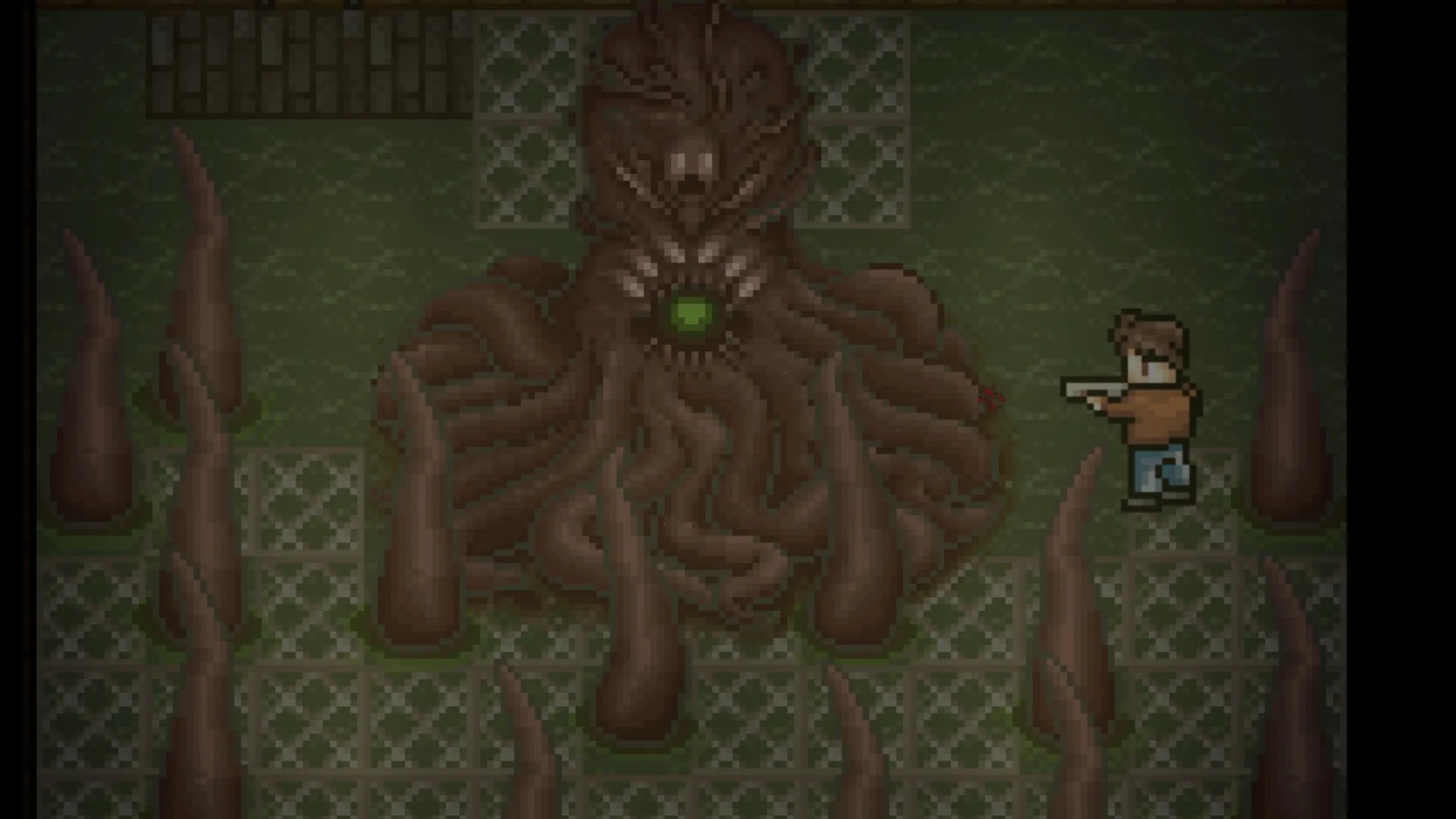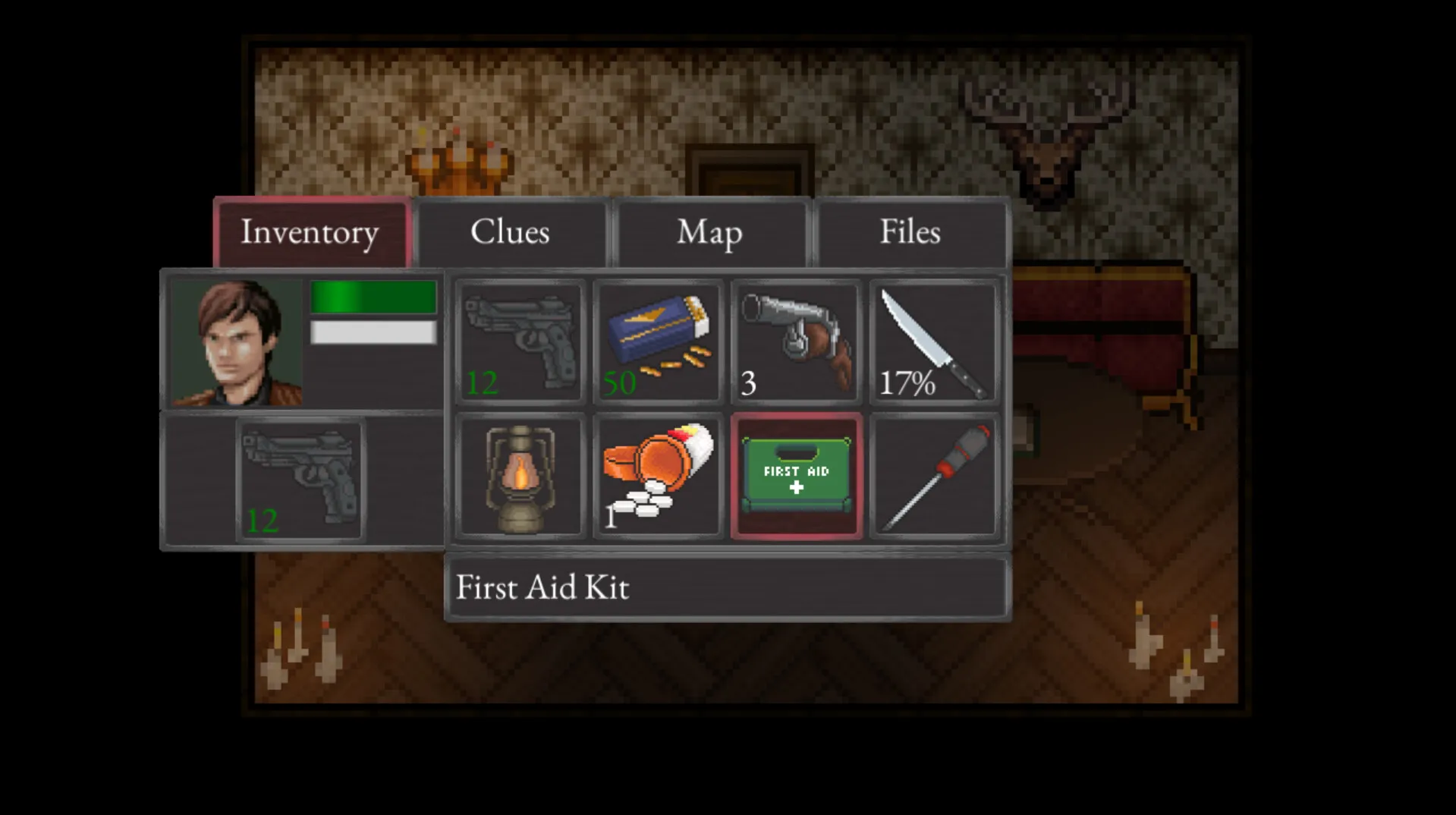Dead of Darkness emerges as a 2D pixel art survival horror game that pays homage to genre-defining classics like Resident Evil and Silent Hill. The story unfolds on Velvet Island, situated off Ireland’s coast in 1985, centering on Miles Windham, a private investigator wrestling with personal tragedy after losing his wife and daughter.
A cryptic cassette tape draws Miles to the island, promising revelations about his family’s past. The narrative weaves elements of folk horror, cosmic horror, and detective storytelling, creating a gripping experience.
Miles confronts grotesque creatures while unearthing dark family secrets, immersed in an atmosphere thick with tension. Retrofiction Games, a solo developer studio, crafted this game as an exploration of survival horror’s legacy. The game’s visual style echoes 16-bit era aesthetics, capturing the pixelated look of classic Super Nintendo games while integrating contemporary design elements.
The gameplay follows a top-down perspective, featuring intricate level design reminiscent of early survival horror titles. Players navigate limited resources, solve environmental puzzles, and experience constant vulnerability. An engaging clue system encourages deep interaction with the game world, adding depth to the player’s investigation.
Story and Narrative
Miles Windham, a private investigator haunted by the tragic deaths of his wife and daughter in a suspicious fire, finds his world transformed when a cryptic cassette tape suggests hidden truths about their demise on Velvet Island, a remote location off Ireland’s coast.
Arriving on the island, he meets Olivia, a nurse harboring her own mysteries, and encounters a cast of complex characters against an atmospheric backdrop. The island emerges as a sinister entity, populated by grotesque creatures and unsettling secrets that challenge Miles’ perception of reality.
The game weaves survival horror tropes with unexpected narrative threads, drawing inspiration from Lovecraftian and folk horror traditions. Subtle revelations about the island’s dark past emerge gradually, creating an immersive experience enhanced by carefully crafted character portraits during dialogue scenes. Voice performances from Miles and Olivia deliver emotional depth, anchoring the supernatural elements in human experience.
While the narrative contains some structural challenges, including a slow initial buildup and occasional predictable plot points, the story maintains an engaging momentum. The game successfully creates a tense atmosphere that keeps players invested in uncovering the mysteries surrounding Miles, Olivia, and the enigmatic Velvet Island.
Gameplay Mechanics
Dead of Darkness follows survival horror conventions, offering a gameplay loop familiar to genre enthusiasts. Core mechanics focus on resource management, backtracking, and environmental challenges, creating a methodical experience. Players carefully handle ammunition, healing items, and key objects while exploring Velvet Island’s complex corridors.
The combat system remains straightforward: Miles uses a pistol, shotgun, and knife, with each weapon serving a specific purpose. Players dispatch enemies by kiting—moving backward to create distance, then stopping to fire—a technique reminiscent of early survival horror games. While functional, the approach lacks nuance, and an eight-directional aiming system makes targeting too easy, reducing the genre’s typical tension.
Puzzle design stands out as the game’s strongest element. Challenges range from simple key-based interactions to complex scenarios like a sheet music puzzle requiring players to annotate a musical score. A clue system encourages exploring game lore through documents and notes. Players can combine clues with items to interact with the environment, such as finding a hidden key by extinguishing fireplace flames. This mechanic rewards exploration and deepens player engagement. Some puzzles feel overly simple, however, with obvious solutions that diminish the overall challenge.
Inventory management presents both challenges and frustrations. Eight inventory slots force players to make strategic choices about carried items, creating a sense of scarcity. Yet this limitation leads to repetitive backtracking as players swap items in storage chests. The absence of quest logs or objective markers compounds navigation difficulties, relying on player memory or trial-and-error.
The game’s difficulty curve feels uneven. Early stages provide abundant resources, making combat feel inconsequential. Midgame suddenly restricts ammunition and healing items, creating abrupt difficulty spikes. Instadeath mechanics in timing-based puzzles and trap sequences feel particularly punishing. Top-down perspective often obscures critical details, leading to unexpected character deaths that feel unfair rather than challenging.
Visuals and Art Style
Dead of Darkness uses a 16-bit pixel art style that sparks memories of survival horror’s classic era. The pixelated visuals create an unsettling environment through limited background details, strategic shadows, and subdued colors. These elements heighten the sense of isolation and fear.
Character designs shine through pixel art, effectively capturing the monstrous creatures of the island and the gritty resilience of protagonist Miles Windham. Dialogue scenes transition to visual novel-style character portraits, elegantly drawn and rich with individual personalities. Enemy portraits especially convey a haunting depth that strengthens narrative engagement.
The game world unfolds across Velvet Island, with each location carefully designed to intensify horror elements. Graham Manor serves as a central space filled with dim corridors, blood-marked walls, and an oppressive quiet. The surrounding island landscape feels equally menacing, featuring dense woodland and decaying structures.
Shiny circles marking interactive objects cleverly reference classic PS1 game background mechanics, guiding players through the pixel art environment without confusion. This thoughtful approach to visual design creates a game that respectfully celebrates survival horror’s visual heritage while offering a fresh experience.
Audio Design
Dead of Darkness excels through its audio design, crafting an oppressive atmosphere with remarkable precision. The soundtrack uses sparse, eerie melodies and ambient sounds to maintain player tension.
Subtle audio elements like creaking floorboards, distant creature sounds, and sudden screams generate persistent unease throughout Velvet Island. Carefully timed audio cues intensify suspense during exploration and enemy encounters. The sound design echoes classic survival horror aesthetic, where each noise carries intentional emotional weight.
Vocal performances reveal character complexity. Miles and Olivia deliver nuanced portrayals that elevate narrative depth. Miles communicates a raw, wounded emotional state while Olivia presents an enigmatic vocal quality.
Dialogues occasionally suffer from unpolished writing, with certain language choices disrupting player engagement. Occasional script weaknesses detract from otherwise immersive vocal performances. Yet the audio elements successfully construct a haunting sensory experience that lingers long after gameplay.
Performance and Technical Aspects
Dead of Darkness provides a technically stable gaming experience that allows players to immerse themselves in horror without technical disruptions.
The game performs consistently throughout gameplay, with no significant technical issues. It maintains a smooth 60 FPS performance, functioning well on various computer configurations. Players using Steam Deck will find the game functional and engaging, with minimal performance hiccups.
The game’s configuration settings could benefit from improvements. Controller input options are restricted, and players cannot customize button mappings. While keyboard and mouse controls offer some adjustment capabilities, the overall customization remains limited.
Graphical settings are basic, which might frustrate players seeking a more personalized visual experience. Despite these constraints, Dead of Darkness demonstrates technical competence across different platforms.
Conclusion and Final Thoughts
Dead of Darkness captures the essence of survival horror through an engaging narrative that weaves Lovecraftian and folk horror elements. The game’s pixel art style creates an eerie atmosphere, transporting players into a haunting world. Strong voice acting and a chilling soundtrack enhance the game’s immersive experience.
The clue system encourages players to explore the game’s rich lore, rewarding careful investigation. While the combat mechanism feels limited, with repetitive enemy encounters and few weapon options, the game maintains an intriguing narrative momentum.
Inventory constraints and instadeath mechanics might challenge players, potentially interrupting the gameplay flow. Survival horror enthusiasts will likely appreciate the game’s nostalgic design and storytelling approach, while more casual players might find some mechanics restrictive.
Dead of Darkness emerges as a passionate exploration of horror game traditions, offering a compelling experience for players seeking a distinctive and atmospheric adventure.
The Review
Dead of Darkness
Dead of Darkness explores survival horror through pixel art aesthetics and narrative depth. The game presents a clue system that adds intrigue to player investigation. Combat encounters feel monotonous, and inventory constraints create player friction. Inventory limits and sudden death scenarios might challenge player engagement. Genre enthusiasts will connect with the game's atmospheric storytelling and visual design, while newcomers could struggle with traditional gameplay mechanics.
PROS
- Engaging narrative with Lovecraftian and folk horror elements.
- Innovative clue system that rewards exploration and lore engagement.
- Nostalgic 16-bit pixel art style and atmospheric environmental design.
CONS
- Repetitive combat with limited depth and weapon variety.
- Frustrating inventory management due to limited slots and excessive backtracking.
- Overuse of instadeath mechanics and timing-based puzzles.





















































